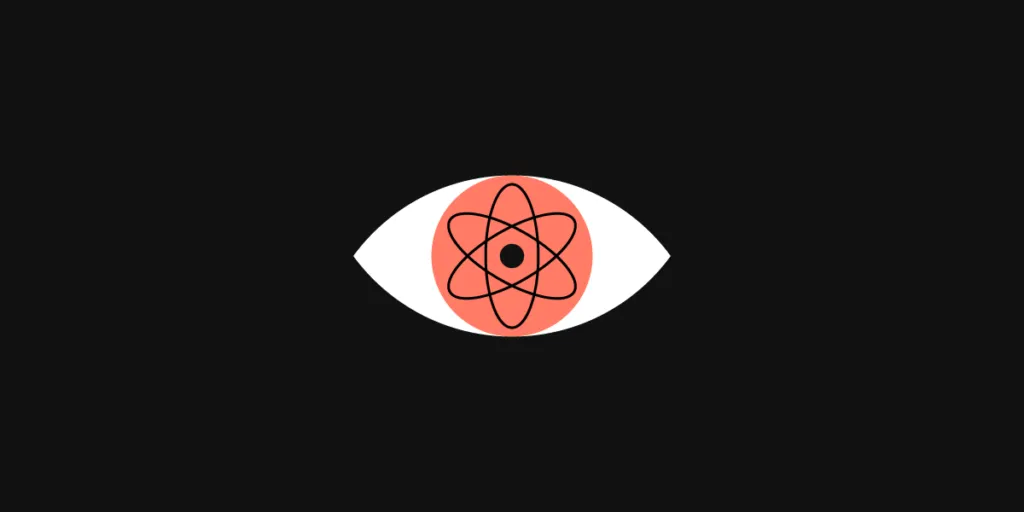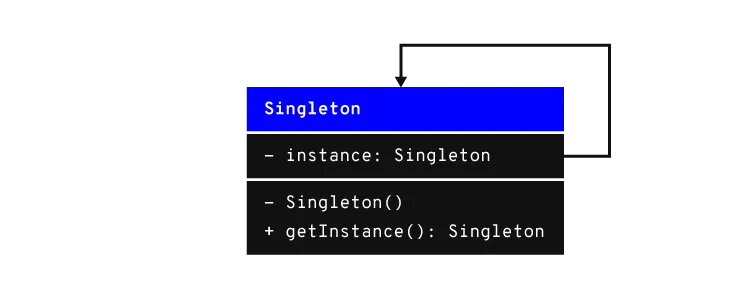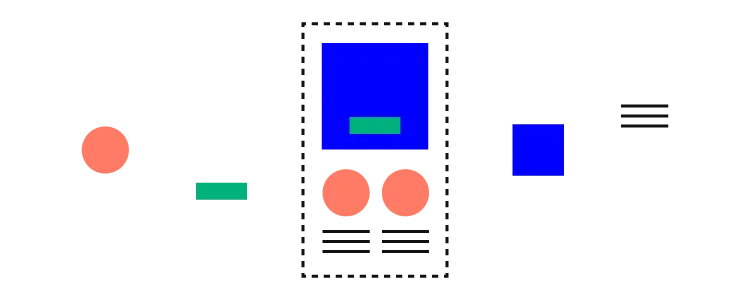

The Best React Design Patterns You Should Know About
source link: https://www.uxpin.com/studio/blog/react-design-patterns/
Go to the source link to view the article. You can view the picture content, updated content and better typesetting reading experience. If the link is broken, please click the button below to view the snapshot at that time.
The Best React Design Patterns You Should Know About

There is no denying the immense popularity and practicality of React. In the fast-changing technology landscape, keeping up with all the new frameworks and tools is a difficult task.
React brought a much-needed sigh of relief for developers with its ease of use. The reusable components, great developer tools, and extensive ecosystem are some of the most loved features of React.
Instead of the traditional approach of directly manipulating the DOM, React introduced a useful level of abstraction in the form of the virtual DOM concept.
The React library is being actively developed and maintained by coders at the tech giant Facebook. This provides it with a much-needed edge over other frameworks and libraries.
Countless contributors in the JavaScript community also regularly contribute to refining and improving React.
All these factors allow React to maintain its popularity among developers even though newer frameworks are constantly emerging and competing for recognition amongst frontend developers.
The success of any framework, library, or programming language can be attributed to its features and the active status of its community.
Apart from these two factors, an often overlooked but highly utilitarian aspect of any programming language or framework is the use of design patterns, and React manages to deliver in this area.
In this post, we take a look at a few of the must-know to react design patterns.
The Importance of Design Patterns
Let us first briefly recap the role that design patterns play. Simply put, design patterns are repeatable solutions to commonly occurring problems in software development.
They serve as a basic template upon which you can build up the program’s functionality according to the given requirements.
The term ‘design pattern’ is not to be confused with a ‘design system’. We have discussed more about design systems in a separate article.
Design patterns not only speed up the development process but also make the code easier to read and to maintain.
Some common examples of design patterns include the Singleton pattern and the Gang-of-Four pattern.
In software development, design patterns are associated with two common roles.
- Offer a common platform to developers
Design patterns provide standard terminology and solutions to known problems. Let us take the example of the Singleton pattern that we mentioned above.

This pattern postulates the use of a single object. Developers implementing this pattern can easily communicate to other developers that a particular program follows the singleton pattern and they will understand what this means.
- Ensure best practices
Design patterns have been created as a result of extensive research and testing. They not only allow developers to become easily accustomed to the development environment but also ensure that the best practices are being followed.
This results in fewer errors and saves time during debugging and figuring out problems that could have been easily avoided if an appropriate design pattern had been implemented.
Like every other good programming library, React makes extensive use of design patterns to provide developers a powerful tool. By properly following the React philosophy, developers can produce some extraordinary applications.
Now that you have an understanding of design patterns. Let us move on to some of the most widely used design patterns available in React.js.
To learn how you can effectively reuse design patterns, check out our article on how great artists reuse.
The Functioning of Reactjs
You can install react using the create-react-app available on Github. Using npm you can add all the other dependencies.
React.js makes use of JSX. This is a syntax extension of JavaScript. It comes with the full power of JavaScript and provides us with what is termed as React ‘elements’.
Although it is not mandatory to use JSX, it is the preferred method due to the helpful visual aid and styling options that it provides. It also provides useful error messages and warnings.
The core philosophy that React.js follows is that of reusable react components. You will notice that this component-based approach can be leveraged to build rich user interfaces for web applications.

These React components can be considered as a small system in itself. Each component has its own state, input as well as output.
The input of a component is taken in the form of props. The component may be considered as a black box. Each having its own state and lifecycle. Components are easy to compose.
The final react app consists of a highly maintainable code.
React Design Patterns
There are numerous design patterns that are available in React.js. Here, we shortlist a few recommended patterns.
Stateless Components
In order to understand the concept of stateless functions, let us first take a look at what is meant by state.
The state is simply the data that is imported into a component. Typically data is fetched from the database.
Components can be of two types, namely, stateful and stateless components. The difference between both is merely the presence of state or lack thereof.

In stateless components, you can not reach this.state inside it.
Stateless components are also called functional components or presentational components. In React, such components always render the same thing or only what is passed to them via props.
Your aim, as a developer, should be to create stateless components even if there is no immediate scenario in which you would have to reuse that particular component.
Most often developers figure out whether a component needs to have a state or not once they start writing the code as it is not always clear beforehand.
For a hierarchy of components, the best practice is to let parent components keep as much state as possible and make stateless child components. Data can be passed down via props.
Conditional Rendering
Conditions are the foremost tool in the arsenal of any software developer.
In the process of writing React components, the need often arises to render a certain JSX code based on the state. This is achieved through conditional rendering.

Conditional rendering is very useful as it allows you to create distinct components based on your needs and then render only the ones that are required by the application.
For instance, conditional rendering can be used to display different messages to the user based on the login status of the user. The message will be subject to the value of the prop isLoggedIn.
Render Props
We discussed how design patterns are there to solve common problems. Render props are available in React to help us solve the problem of logic repetition.
According to official React documentation, render props are defined as a ‘technique for sharing code between React components using a prop whose value is a function’.
Render props prove really handy as they allow us to share the same state across different components. Instead of hardcoding the logic inside each component, you can use a function prop to determine what to render.
Some popular libraries that make use of render props include Formik, React Router, and Downshift.
Controlled Components
Web forms are a common requirement in a large number of applications and controlled components are React’s answer to handling form state.
The controlled component takes the state through props. It can notify any changes by means of callbacks like onChange.
Parent components can control it by handling the callback and managing its own state meanwhile, the new values are passed to the controlled component as props.
By default React forms have support for both controlled and uncontrolled components. It is highly recommended that you use controlled components.
The following code snippet shows a controlled component.
<input type = "text" value = {value} onChange = {handleChange} />
React Hooks
Hooks are a relatively new addition to react and were introduced in React 16.8.
These functions allow developers to use React without classes. There are a number of different pre-built hooks available like the Effect Hook ( useEffect ) and the State Hook.
For a complete list of available hooks, you can visit the Hooks API Reference.
Apart from the pre-built hooks in React, you can also create your own hooks. This allows you to extract the component logic and create reusable functions.
Hooks are a welcome addition to React and the developer community really appreciated this new addition with great enthusiasm.
However, it must be kept in mind that sometimes hooks can become a little tricky to work with when the arguments are objects, arrays, or functions. This can become somewhat confusing.
On the other hand, custom hooks are easy and simple to use and they also provide immense benefits to the developer.
Conclusion
React has proven to be a highly popular library. The community is among the fastest-growing developer communities online.
You will also find lots of useful web development resources available online that make it easy to learn react.js and adapt to it.
The power of React is due to its amazing features and the robust architecture that it offers. One of the most prominent and widely loved features of React is its design patterns.
Design patterns are in fact what gives this library its extraordinary practicality and usefulness. They make code optimization and maintenance easier.
They allow developers to create apps that are flexible in nature, deliver better performance, and produce a codebase that is easier to maintain.
We have discussed a few popular React design patterns like stateless functions, render props, controlled components, conditional rendering, and react hooks.
However, it must be noted that react design patterns are not just limited to these patterns and there are several different design patterns that you can implement.
Once you get familiar with the usage of the common design patterns, it will become easier to graduate to others.
Capturing the true essence of React application development can be made easier by the use of the right tool. At UXPin we provide you precisely that! Based on a deep understanding of the best industry practices and design principles, we give you a tool that simplifies the whole design process. You can also check out our latest blog for more inspiration.
Recommend
About Joyk
Aggregate valuable and interesting links.
Joyk means Joy of geeK